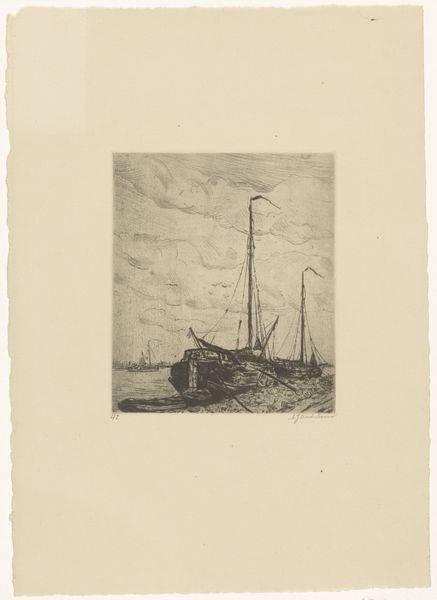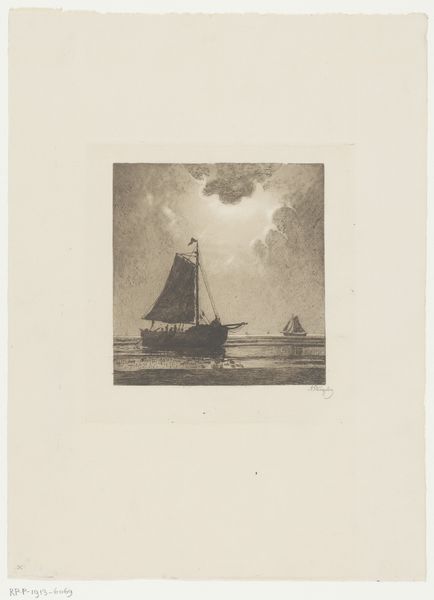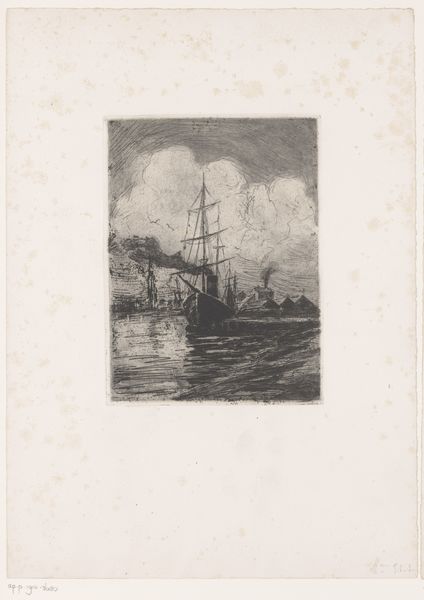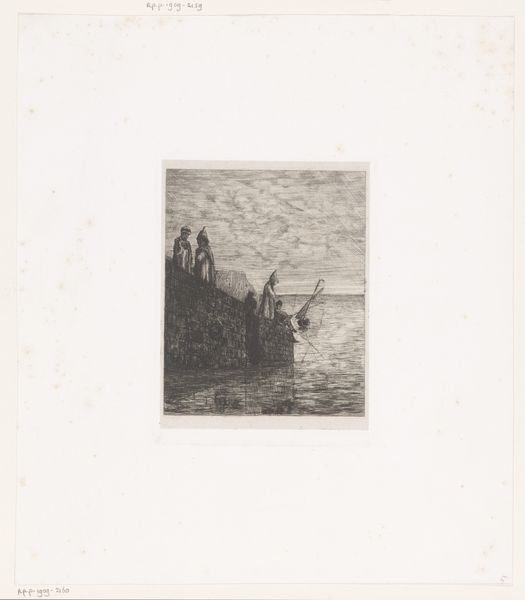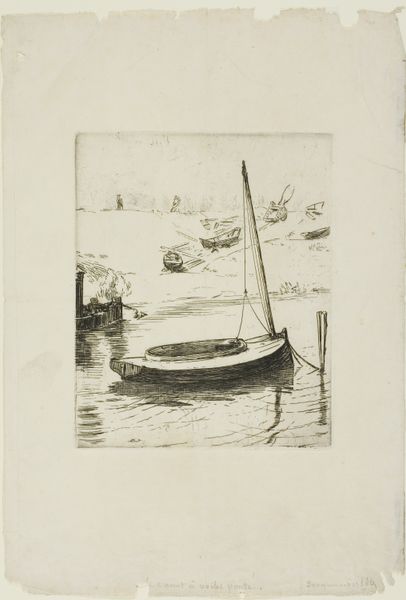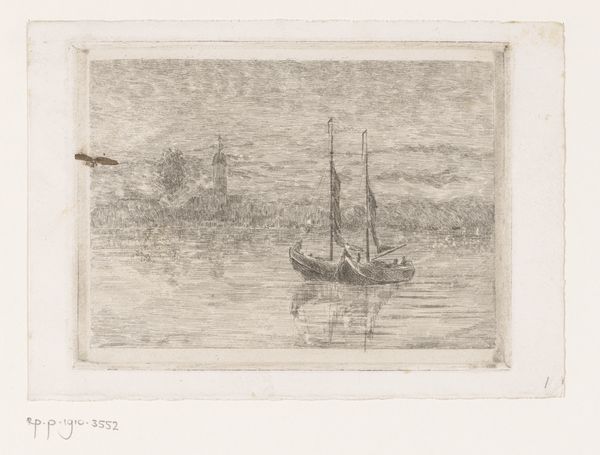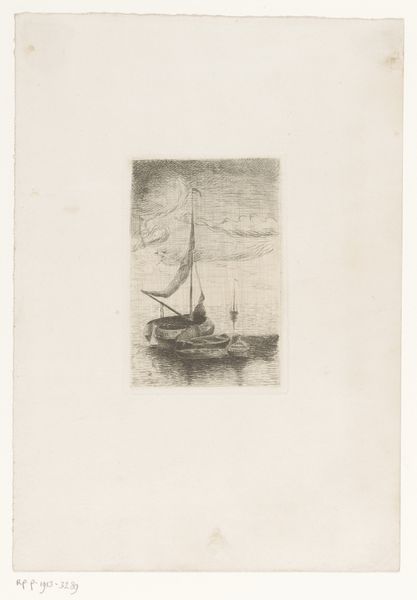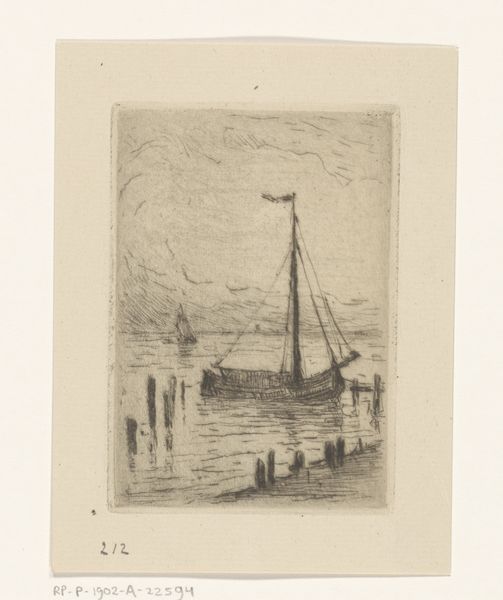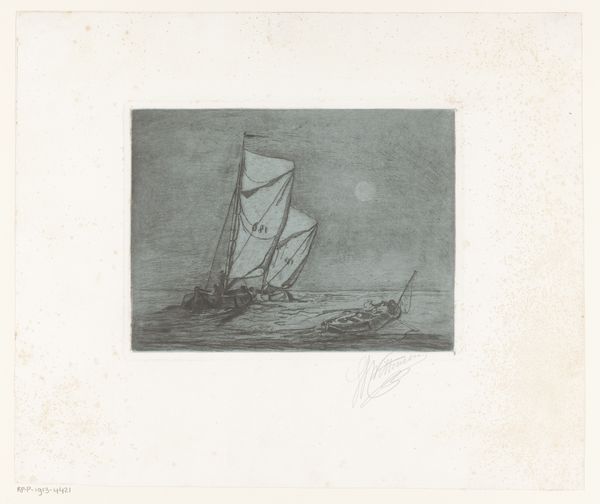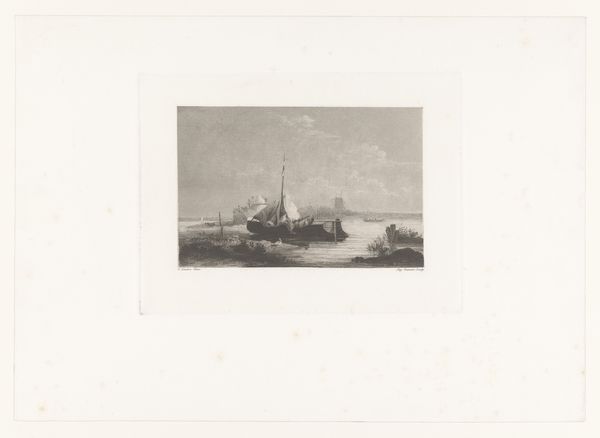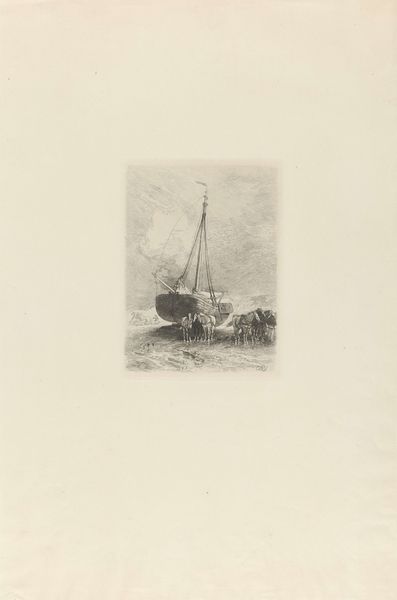
print, etching
# print
#
etching
#
landscape
#
pencil drawing
#
realism
#
monochrome
Dimensions: height 193 mm, width 158 mm
Copyright: Rijks Museum: Open Domain
Curator: Here we have Maurice Hagemans’s etching from 1881, titled “Zeilboten aangemeerd langs een kade,” or “Sailboats Moored Along a Quay.” It depicts boats clustered at the edge of what seems to be a canal under the moonlight. Editor: Immediately, the composition evokes a feeling of tranquility, perhaps even a slight melancholy. The monochrome palette enhances the scene's stillness. The almost ghostly rendering of the boats anchored to the dock recalls industrialization’s relationship with the working class. Curator: Etchings such as this one allowed for relatively inexpensive reproductions, bringing art to a wider audience during the late 19th century. The silvery moon acts as an eternal symbol, especially poignant when considering this piece through the lens of Symbolism’s exploration of inner life and cultural memory. What feelings does it summon in you? Editor: Beyond the Symbolist's appeal to the universality of human emotion, one cannot overlook the societal changes in maritime labor that this art symbolizes. Etchings could capture such shifting spaces and reflect on labor movements tied to coastal regions. Do we not see an inherent tension when acknowledging that a beautiful artwork could reflect the challenges workers faced in a society transitioning? Curator: Your view grounds the aesthetics with important socio-historical realities. As an image of the past is reproduced for our contemporary gaze, it carries not only the artistic intent but the weight of generations—especially since the water holds symbolic potential. Does the moon not light their way, not guide and illuminate humanity towards safer harbor? Editor: But harbors were rarely “safe” for marginalized peoples. Perhaps, paradoxically, it is also reflecting the precarity and displacement experienced by the maritime workers, capturing a period that often excluded the poor. And speaking of the labor invested here: this piece has the appearance of quick gestural lines yet must require careful meticulousness, just like the sailors. Curator: I can't help but appreciate the endurance of symbols. In an epoch undergoing rapid transformation, viewers still sought connection with the eternal. Maybe people were seeking solace from all those disruptive societal forces… It really compels us to meditate on the enduring power of images and our emotional response to the familiar even amidst change. Editor: It certainly leaves a haunting resonance, knowing how intertwined artistic representations are with both romantic ideals and raw, material realities of labor, race, and gender during the Belle Époque. What does it tell us about class structures in the late 19th century? Hageman asks more of us than providing an atmospheric snapshot.
Comments
No comments
Be the first to comment and join the conversation on the ultimate creative platform.
